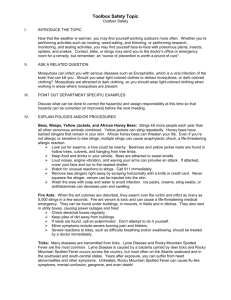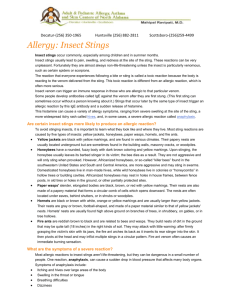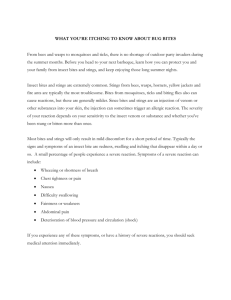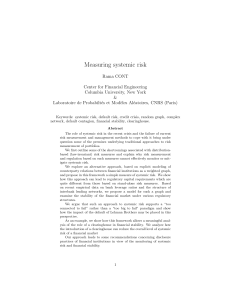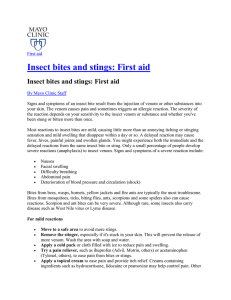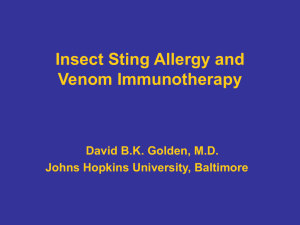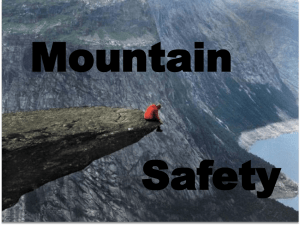Large Local Reactions to Insect Stings
advertisement
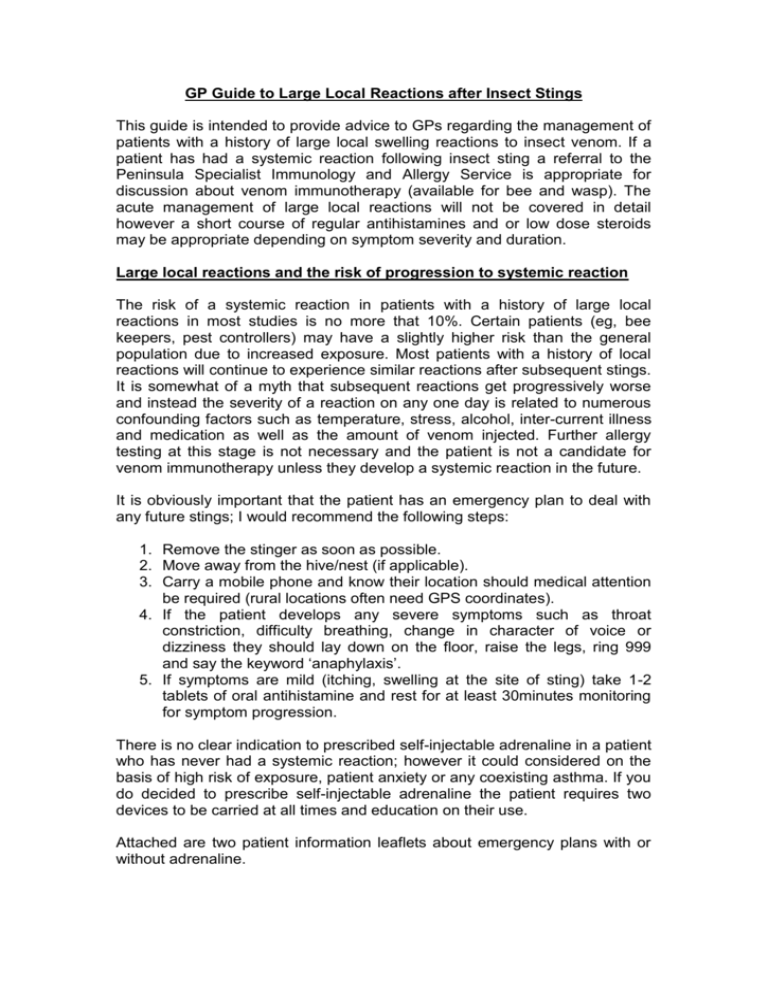
GP Guide to Large Local Reactions after Insect Stings This guide is intended to provide advice to GPs regarding the management of patients with a history of large local swelling reactions to insect venom. If a patient has had a systemic reaction following insect sting a referral to the Peninsula Specialist Immunology and Allergy Service is appropriate for discussion about venom immunotherapy (available for bee and wasp). The acute management of large local reactions will not be covered in detail however a short course of regular antihistamines and or low dose steroids may be appropriate depending on symptom severity and duration. Large local reactions and the risk of progression to systemic reaction The risk of a systemic reaction in patients with a history of large local reactions in most studies is no more that 10%. Certain patients (eg, bee keepers, pest controllers) may have a slightly higher risk than the general population due to increased exposure. Most patients with a history of local reactions will continue to experience similar reactions after subsequent stings. It is somewhat of a myth that subsequent reactions get progressively worse and instead the severity of a reaction on any one day is related to numerous confounding factors such as temperature, stress, alcohol, inter-current illness and medication as well as the amount of venom injected. Further allergy testing at this stage is not necessary and the patient is not a candidate for venom immunotherapy unless they develop a systemic reaction in the future. It is obviously important that the patient has an emergency plan to deal with any future stings; I would recommend the following steps: 1. Remove the stinger as soon as possible. 2. Move away from the hive/nest (if applicable). 3. Carry a mobile phone and know their location should medical attention be required (rural locations often need GPS coordinates). 4. If the patient develops any severe symptoms such as throat constriction, difficulty breathing, change in character of voice or dizziness they should lay down on the floor, raise the legs, ring 999 and say the keyword ‘anaphylaxis’. 5. If symptoms are mild (itching, swelling at the site of sting) take 1-2 tablets of oral antihistamine and rest for at least 30minutes monitoring for symptom progression. There is no clear indication to prescribed self-injectable adrenaline in a patient who has never had a systemic reaction; however it could considered on the basis of high risk of exposure, patient anxiety or any coexisting asthma. If you do decided to prescribe self-injectable adrenaline the patient requires two devices to be carried at all times and education on their use. Attached are two patient information leaflets about emergency plans with or without adrenaline.



